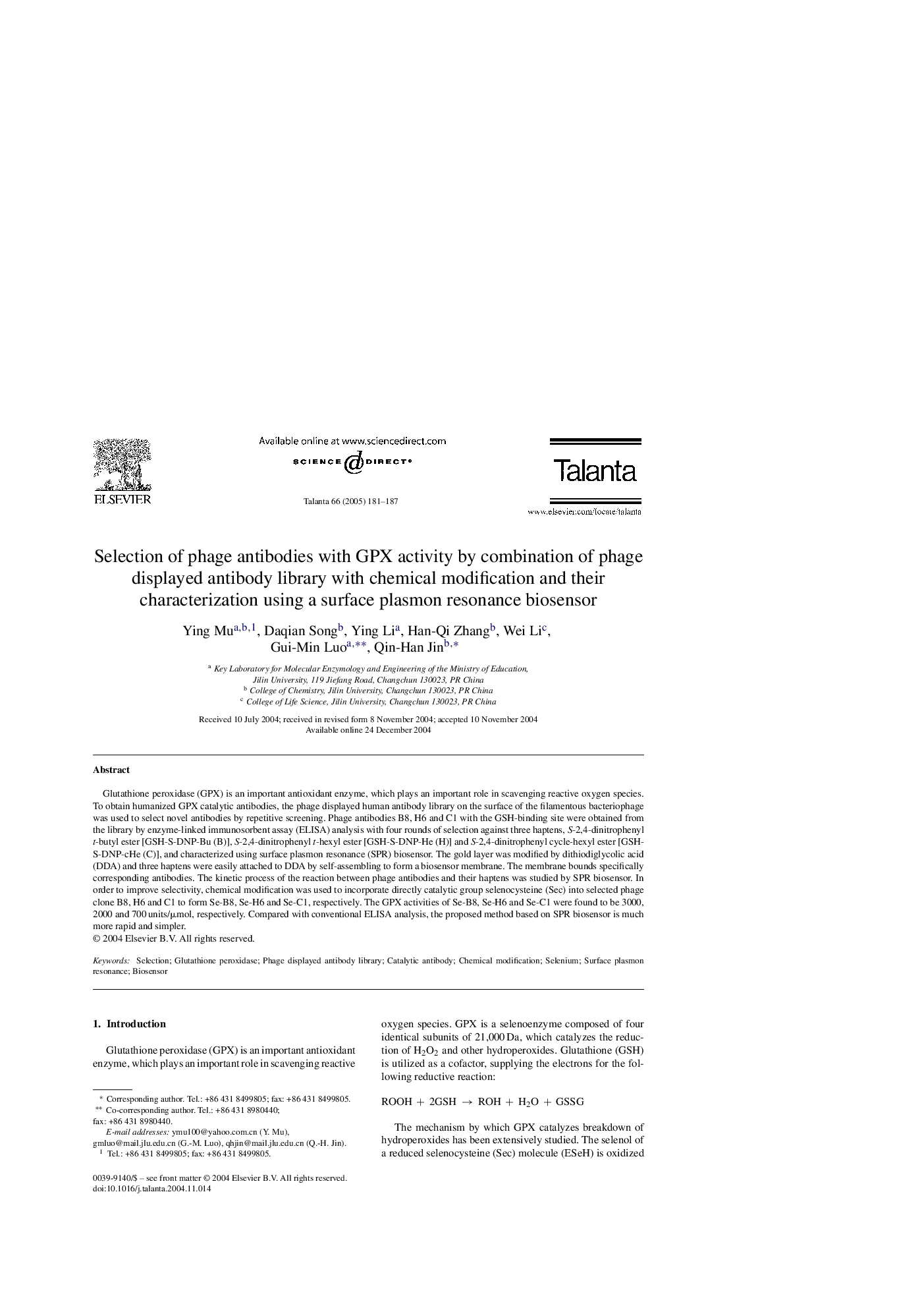| Article ID | Journal | Published Year | Pages | File Type |
|---|---|---|---|---|
| 10562952 | Talanta | 2005 | 7 Pages |
Abstract
Glutathione peroxidase (GPX) is an important antioxidant enzyme, which plays an important role in scavenging reactive oxygen species. To obtain humanized GPX catalytic antibodies, the phage displayed human antibody library on the surface of the filamentous bacteriophage was used to select novel antibodies by repetitive screening. Phage antibodies B8, H6 and C1 with the GSH-binding site were obtained from the library by enzyme-linked immunosorbent assay (ELISA) analysis with four rounds of selection against three haptens, S-2,4-dinitrophenyl t-butyl ester [GSH-S-DNP-Bu (B)], S-2,4-dinitrophenyl t-hexyl ester [GSH-S-DNP-He (H)] and S-2,4-dinitrophenyl cycle-hexyl ester [GSH-S-DNP-cHe (C)], and characterized using surface plasmon resonance (SPR) biosensor. The gold layer was modified by dithiodiglycolic acid (DDA) and three haptens were easily attached to DDA by self-assembling to form a biosensor membrane. The membrane bounds specifically corresponding antibodies. The kinetic process of the reaction between phage antibodies and their haptens was studied by SPR biosensor. In order to improve selectivity, chemical modification was used to incorporate directly catalytic group selenocysteine (Sec) into selected phage clone B8, H6 and C1 to form Se-B8, Se-H6 and Se-C1, respectively. The GPX activities of Se-B8, Se-H6 and Se-C1 were found to be 3000, 2000 and 700 units/μmol, respectively. Compared with conventional ELISA analysis, the proposed method based on SPR biosensor is much more rapid and simpler.
Keywords
Related Topics
Physical Sciences and Engineering
Chemistry
Analytical Chemistry
Authors
Ying Mu, Daqian Song, Ying Li, Han-Qi Zhang, Wei Li, Gui-Min Luo, Qin-Han Jin,
